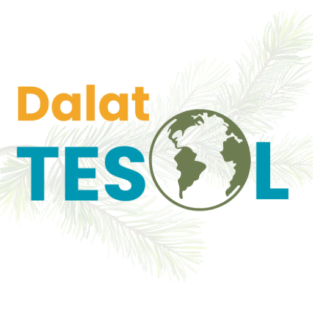By Dalat TESOL
Helping new researchers build valid and reliable research tools in English language education
📌 Introduction
If you’re planning a quantitative or mixed-methods research study in TESOL, you’ll likely need a questionnaire to collect data from students, teachers, or other stakeholders.
But here’s the problem: poorly designed questionnaires lead to unclear data, low validity, and frustrated participants. Many novice researchers struggle with:
- What types of questions to include
- How many items are enough
- Whether to adapt existing scales or create new ones
- How to ensure the questions are reliable and meaningful
This article will walk you through how to create a strong, research-worthy questionnaire for TESOL studies.
🎯 When to Use a Questionnaire in TESOL
Use a questionnaire when you want to:
- Measure attitudes, perceptions, beliefs, or frequency of behaviors
- Survey a large number of participants efficiently
- Explore relationships between variables (e.g., AI use and self-efficacy)
Common TESOL topics suitable for questionnaire studies:
- Motivation to learn English
- Use of learning strategies or technology
- Attitudes toward translanguaging or EMI
- Perceived usefulness of AI tools (e.g., ChatGPT)
🧱 Step-by-Step Guide to Questionnaire Design
1. Clarify Your Constructs
Before writing anything, ask:
- What am I trying to measure?
- Are these psychological constructs (e.g., confidence, anxiety)?
- Are they behaviors (e.g., how often students use AI tools)?
✅ Example:
If your study is on AI self-efficacy, your construct is “students’ confidence in using AI tools for academic tasks.”
2. Search for Existing Scales First
Before creating new questions, check if validated questionnaires already exist.
Useful sources:
- Google Scholar:
"self-efficacy scale" AND "academic writing" - ResearchGate / Academia.edu
- Past theses and journal articles
If possible, adapt and cite existing instruments. This saves time and improves reliability.
3. Write Clear and Specific Items
Use simple, neutral, and unambiguous language. Avoid leading or double-barreled questions.
❌ Bad: “I enjoy using useful technologies like ChatGPT and Grammarly.”
✅ Better: “I feel confident using ChatGPT to brainstorm ideas for writing tasks.”
✅ Tips:
- Use present-tense statements
- Write one idea per item
- Ensure items align directly with your construct
- Mix positively and negatively worded items to reduce response bias (but don’t overdo it)
4. Choose an Appropriate Scale
Most TESOL questionnaires use Likert-type scales:
Strongly disagree (1) → Strongly agree (5 or 7)
✅ Good example:
“I feel anxious when I speak English in front of my class.”
(1 = Strongly disagree, 5 = Strongly agree)
Make sure scale labels are clear, consistent, and match the question’s intent.
5. Group Items by Construct or Section
If you’re measuring multiple constructs (e.g., AI use, writing self-efficacy, motivation), group them into sections with clear headings:
Section A: Background Information
Section B: AI Tool Usage Frequency
Section C: Academic Writing Self-Efficacy
Section D: Attitudes Toward AI in Education
This improves flow and prevents confusion.
6. Pilot the Questionnaire
Before using it in your full study:
- Give it to 5–10 similar participants
- Ask for feedback: Are any items unclear?
- Check timing: Does it take too long?
Revise based on feedback.
7. Check for Reliability and Validity
- Use Cronbach’s alpha to check internal consistency for each scale (α ≥ 0.7 is acceptable)
- If adapting items, explain your rationale
- Provide references for existing instruments used
- Include sample items in your appendix
🛠 Sample Questionnaire Items
Construct: Academic Writing Self-Efficacy
- I can clearly organize my academic essays.
- I am confident in using appropriate academic vocabulary.
- I find it difficult to revise my writing based on teacher feedback. (reverse-coded)
Construct: AI Use Frequency
- I use ChatGPT to brainstorm before writing.
- I check my grammar using Grammarly or similar tools.
- I rarely use AI tools for academic tasks. (reverse-coded)
⚠️ Common Mistakes to Avoid
| Mistake | Why it’s a problem |
|---|---|
| Using too many items | Leads to participant fatigue |
| Asking leading questions | Produces biased responses |
| Not aligning items with research questions | Weakens your analysis |
| Mixing constructs in one section | Confuses respondents and data analysis |
| Forgetting demographics | Makes interpretation difficult |
✍️ Final Tips
- Keep it under 20–30 items unless needed
- Pilot-test and revise
- Always include a short introduction at the top explaining the purpose and estimated time
- Get ethics approval if required by your institution
📎 Optional Template for the Intro of Your Questionnaire
Welcome!
This survey is part of a research project on how students use AI tools in academic writing. Your responses are anonymous and confidential. The survey takes approximately 8–10 minutes to complete.
Thank you for your time!
📣 Need help reviewing your questionnaire draft?
Email us at dalattesol@gmail.com — we’re happy to help!
—
🌿 Dalat TESOL – Chia sẻ kiến thức giảng dạy, nghiên cứu khoa học và cơ hội xuất bản
